How a Hong Kong interior designer transformed a dated rental flat into a family home
Aviva Duncan immediately saw potential in the 2,100 sq ft Mid-Levels apartment and made it her own, with the landlord’s blessing, of course

Most people would run for the hills when confronted with a dated, poorly decorated rental flat. Not so interior designer Aviva Duncan. When she was taken to view her 2,100 sq ft, three-bedroom, two-bathroom home in Mid-Levels, she spotted its potential instantly and signed the lease almost immediately.
“My previous apartment was one big room, like a box – I wanted more of an interior journey,” says Duncan, who is from Melbourne, Australia, but moved to Hong Kong in 2000, then Tokyo from 2004 to 2011, before returning to the city.
“I liked the different layers of this flat, where one room leads to another and then onto another, and I love the luxury of having both a separate dining room and breakfast nook.”
What she wasn’t so keen on was the dated look – frosted windows and ugly floor tiles in the kitchen (see Tried + tested) – and an electrical system that couldn’t support multiple appliances simultaneously. With the blessing of her landlord, who also gave her a rent reduction, she took it upon herself to fix it up.
“Twenty years ago, people wouldn’t have dreamed of investing a cent in a rental property but these days they are increasingly making rental spaces their own. Most of my core business involves cosmetic renovations and beefing up the electrics,” Duncan says. “I felt it was worth spending money to make this flat somewhere I wanted to live.
“Hong Kong is transient but I didn’t want that sense of transience for my family, such as putting up with certain things like unsightly wallpaper and make-do furniture purely because we might be moving on in a few years.”
Other home improvements included replacing recessed lighting with spotlights; substituting frosted windowpanes with clear glass; and installing shelves and cupboards in the kitchen and built-in wardrobes in the bedrooms. She also sanded down and repainted all the doors and added new door handles.
“I like to cancel out anything unsightly wherever I live but I always make a mental note to spend less on the things I can’t take with me,” she says. “Lighting, for example, can be taken from one flat to another and makes a real statement in a room. I also advise people to invest in decent rugs, blinds and curtains, which can transform a space and also be re-cut to fit when they move.”
Given Duncan’s two daughters, Mia and Lucy, are now aged 15 and 10, respectively, she says her family’s lifestyle and, consequently, their room-fit-out priorities have changed. Television screens are conspicuously absent, for example, because everyone has different viewing tastes and watches what they want on their laptops. Unlike at their previous flat, the girls now share a bathroom so, to forestall inevitable arguments, Duncan turned a cupboard in Mia’s bedroom into a make-up space, complete with a mirror and wall-mounted dressing table. Mia can now take as long as she wants to get ready, without incurring the wrath of her younger sister.
“When the girls were little, we’d all bundle into the living room to play and watch TV together so it needed to be a big, open space,” she recalls. “Nowadays, the girls prefer to be in their rooms so it was important to have bigger beds and to get the decor the way they wanted it.”
Duncan’s own tastes have also changed. She describes her former flat as “bold and bravely multicoloured” but in this one she went for more muted tones, with at least five shades of grey, as well as black-and-white Fornasetti-illustrated wallpaper in the hallway.
“I don’t know if I’ve changed or whether it’s the mood of the world right now but I’m a bit over colour at the moment and don’t feel like using it,” she says.
That said, the stylish flat is far from gloomy. An art collection built up over the years adds pops of colour throughout as do gorgeous rugs that Duncan designs and custom makes herself. She also created a striking olive velvet headboard in the master bedroom.
“I usually get an inkling about colour but I experiment on myself before suggesting anything radically different to clients, particularly as Hong Kong is a conservative environment,” she says. “The olive is quite gutsy – and even I was surprised how well the headboard turned out – and I have a feeling that shade will become more mainstream soon, like blush.”
Although Duncan’s flat would make a good advertisement for her interior skills, she says she doesn’t use it as her calling card. Instead, she believes that homes should be individual so what she likes to see and have around her might not be to everyone’s taste.
“Interior design is so specific to each person. I needed to create a homely space for my family but if you want to live minimally or hanker after somewhere oozing with glamour, I say go for it – rental apartment or not!”
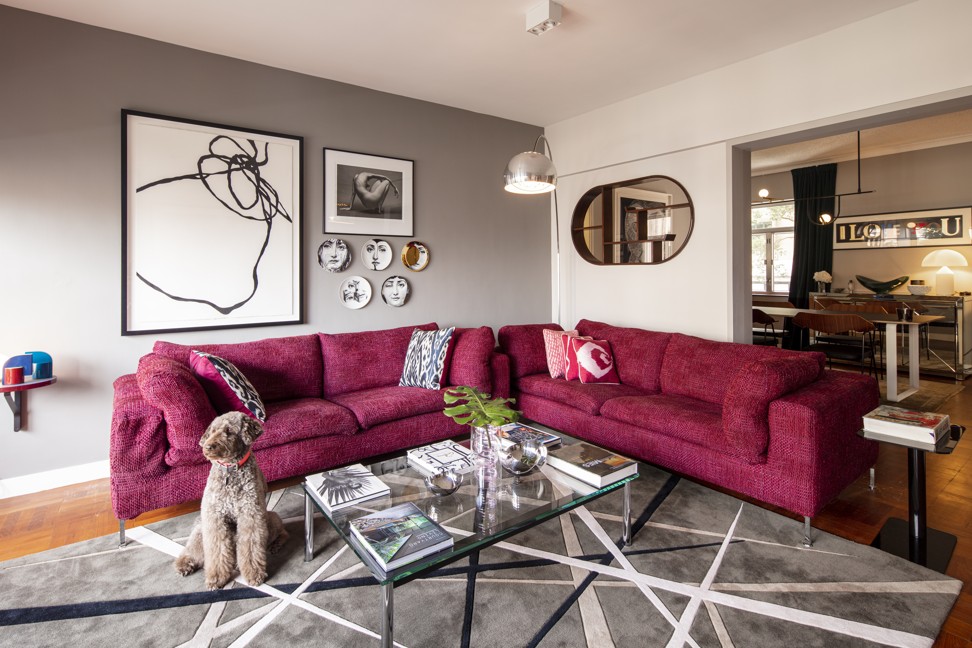
Living room The Cassina coffee table and sofas were bought years ago in Tokyo, Japan; the latter have been re-covered with fabric from Altfield. The Galactic rug (HK$16,000/US$2,000) was custom designed and made by Aviva Duncan. The photograph is by James Houston and the Fornasetti plates (HK$2,000 to HK$3,000 each) came from Lane Crawford.
The abstract artwork, by Camie Lyons, came from The Cat Street Gallery, which has since closed. The side table and wall-mounted table came from Nest but have since been discontinued. On the wall-hung table are art pieces from Hermès, a gift from a client. The Arco floor lamp (£1,450/HK$14,650) came from The Conran Shop.

Living room detail The large framed photograph, by Denice Hough, came from The Cat Street Gallery. The Eames lounger and footstool (HK$63,100 for the set) was from Lane Crawford. The multicoloured Shuffle Table MH1 Spectrum (£358), by &Tradition, and wall-mounted table (discontinued), both came from Nest. The vintage lamp was a gift. The round rug (HK$8,000) was designed and made by Duncan.
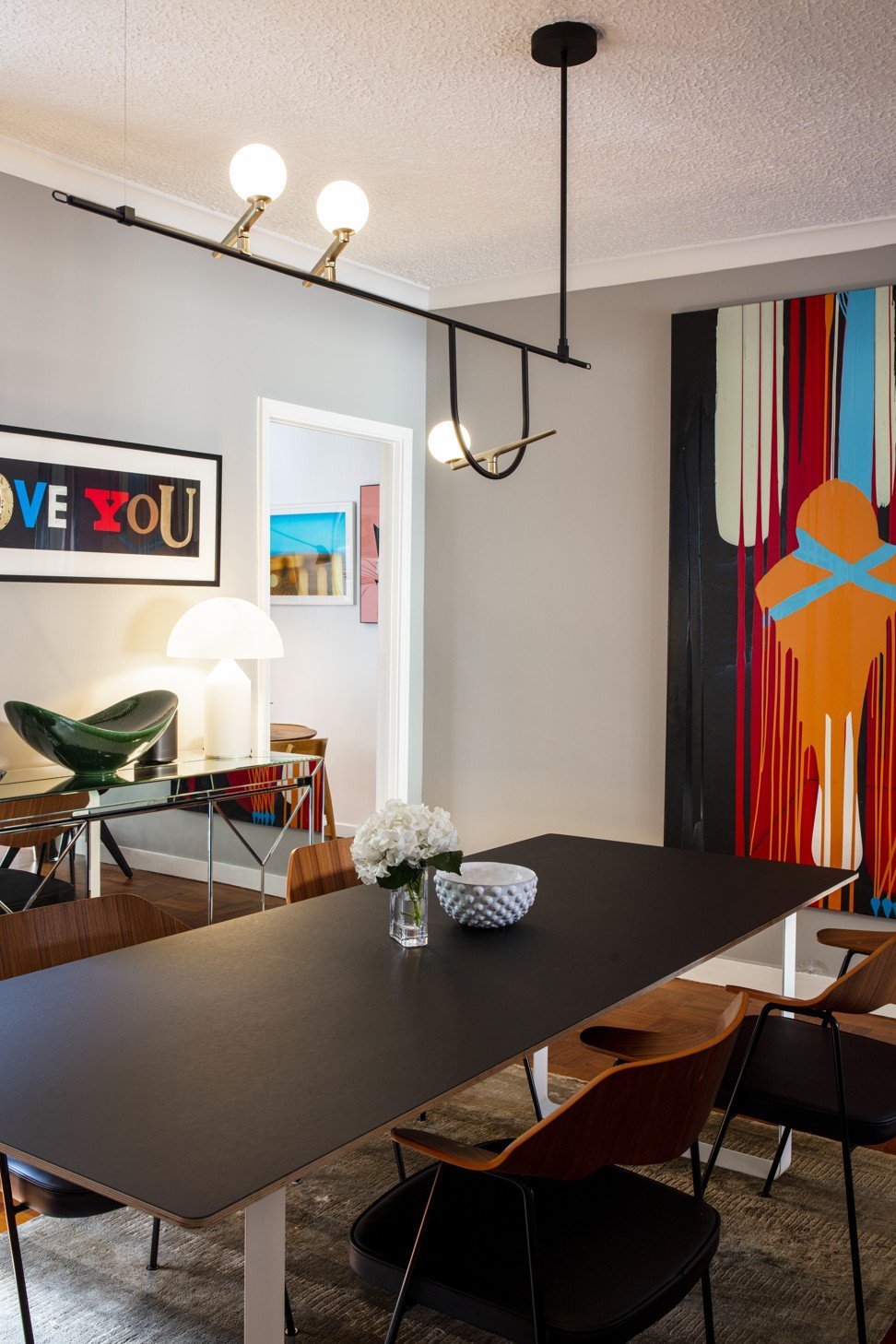
Dining room A large painting by Robert Doble and “I Love You”, by pop artist Peter Blake, from a gallery since closed, add colour to the dining room. The Muuto dining table (£1,245) from Nest is complemented by Lane Crawford chairs (HK$3,500 each). The pendant light (HK$8,475) was designed by Neri&Hu for Artemide.
The rug (HK$8,000) was designed and made by Duncan. On the mirrored sideboard, which was bought in Horizon Plaza a decade ago, is a glass Cassina lamp (US$1,200) that was bought in Tokyo years ago and a green bowl, which was a gift from a friend who shares Duncan’s love of mid-century ceramics.
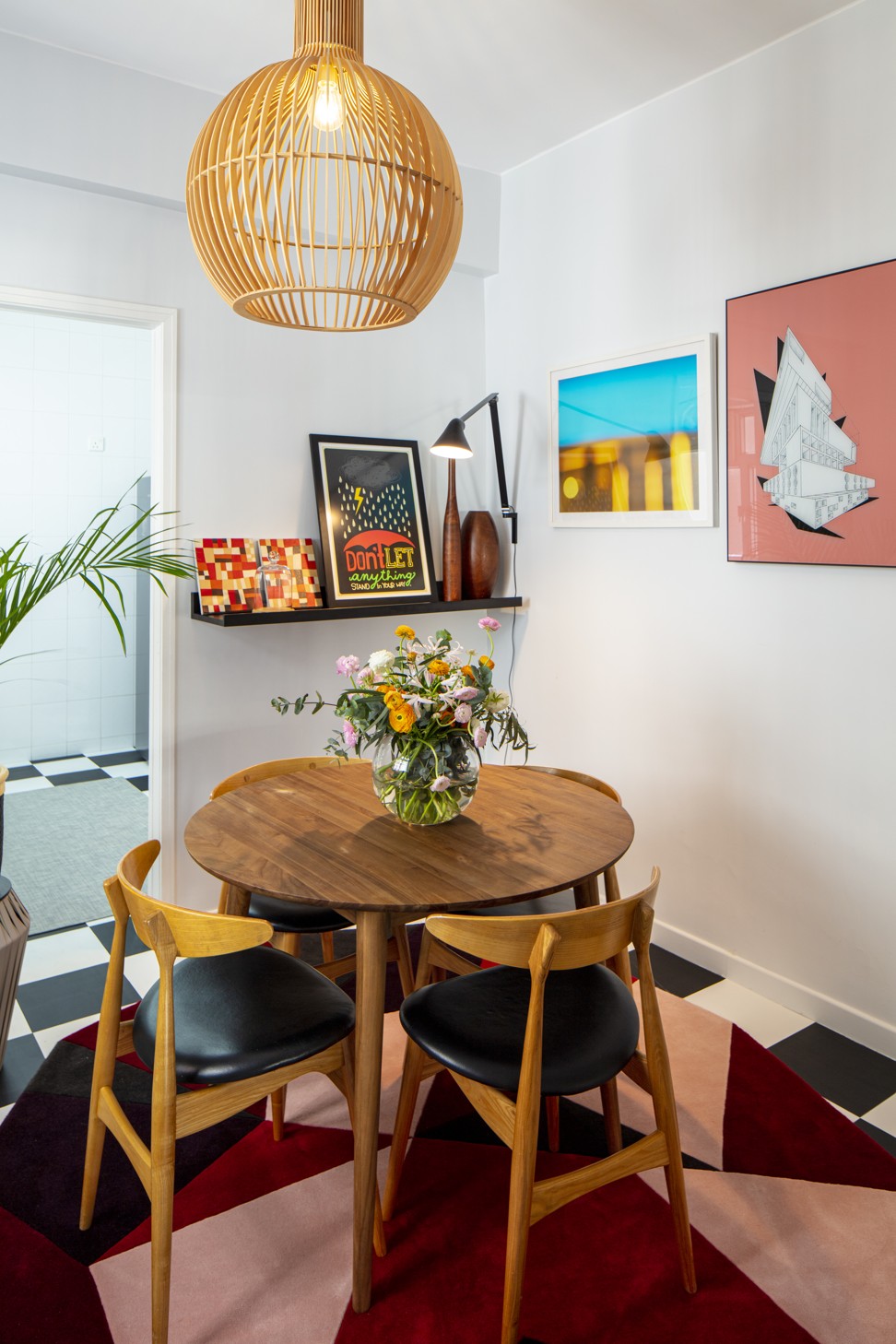
Breakfast nook The table (HK$7,450) came from the Vintage Collection by Tree and the vintage chairs were bought in Tokyo a long time ago. The raspberry rug (HK$9,500) was custom designed and made by Duncan. The ceiling lamp was a moving-in gift from a friend while the Louis Poulsen table lamp was £248 from Nest.
The grid paintings are by Julia Ritson; the umbrella print was bought online years ago; the blue-sky print was student art bought from the Savannah College of Art and Design; and the illustration on a pink background came from BoConcept.
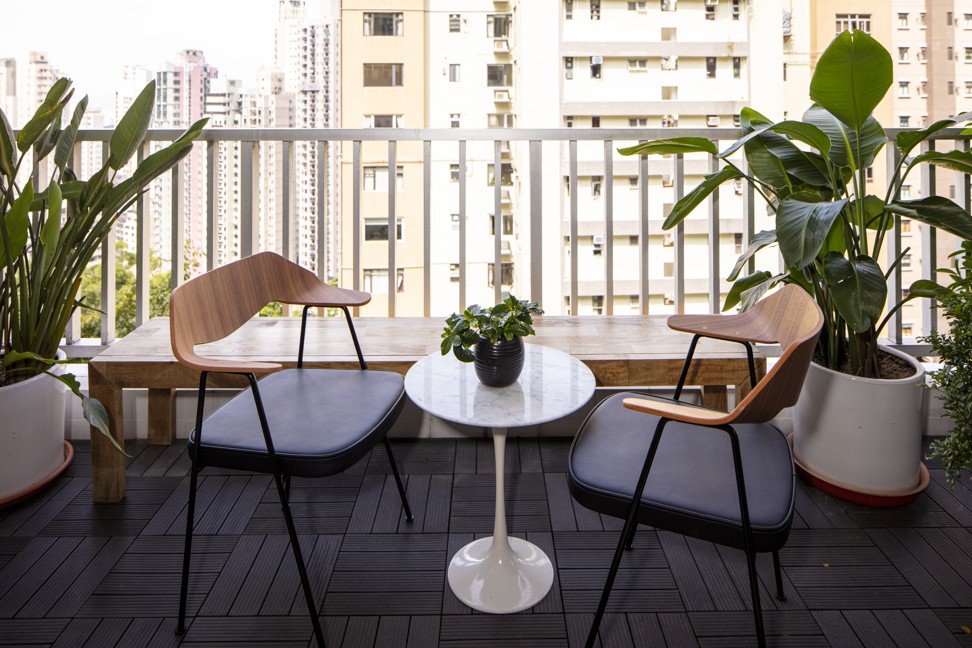
Balcony Duncan bought the Eero Saarinen table in Tokyo about 10 years ago. The chairs (HK$3,500 each) came from Lane Crawford and the bench (HK$4,450) was from Tree. The decking was already in place when she moved in.
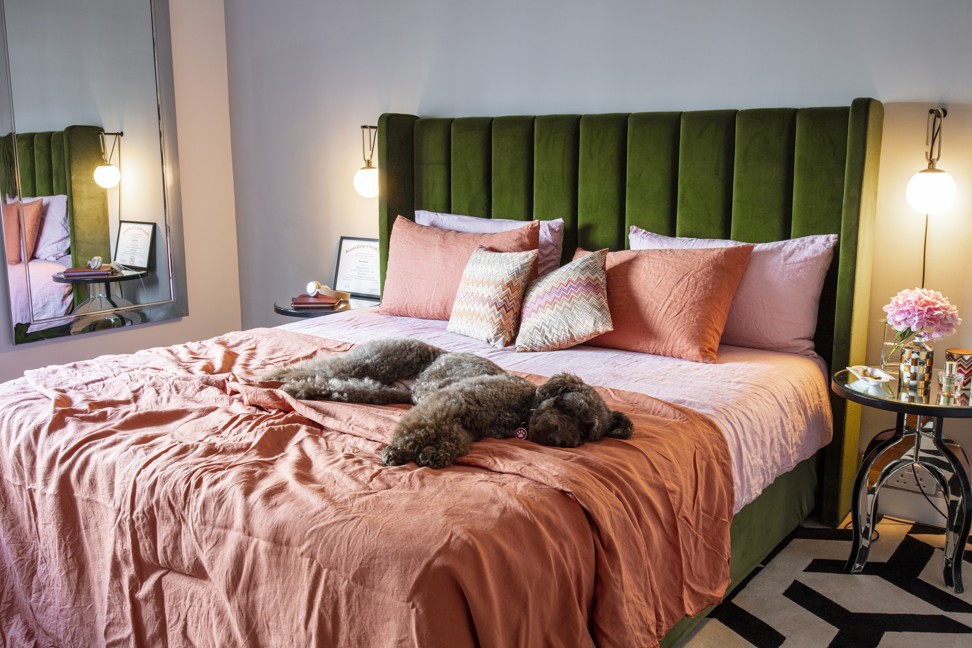
Main bedroom The Sealy bed was bought in Japan but Duncan custom designed and made the olive velvet headboard (HK$11,000). The vintage French bedside tables, picked up years ago in Tokyo, are complemented by Artemide bedside lights (HK$3,000 each). The Missoni cushions were bought at a private sale and the mirror was purchased years ago from a shop in Horizon Plaza. The black-and-white geometric rug was designed and made by Duncan for HK$18,000.
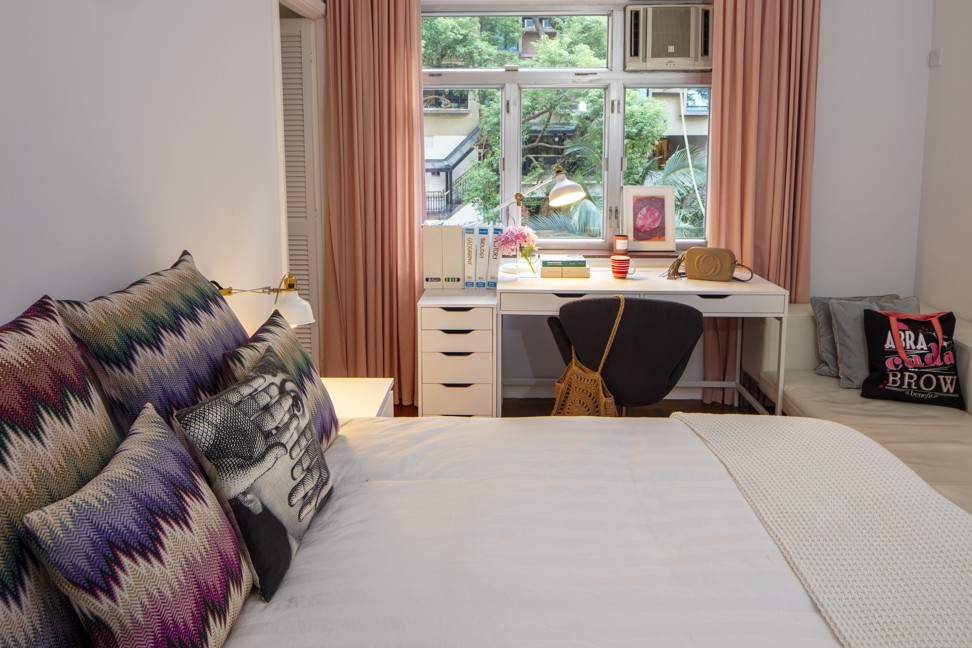
Mia’s room The bed (HK$2,990), bedside table (HK$349), bedside lamp (HK$229), desk (HK$1,090), desk lamp (HK$559) and drawer unit (HK$790), all came from Ikea. The Missoni cushions were bought at a private sale. The Swan chair and Cassina sofa have been in the family for a decade.
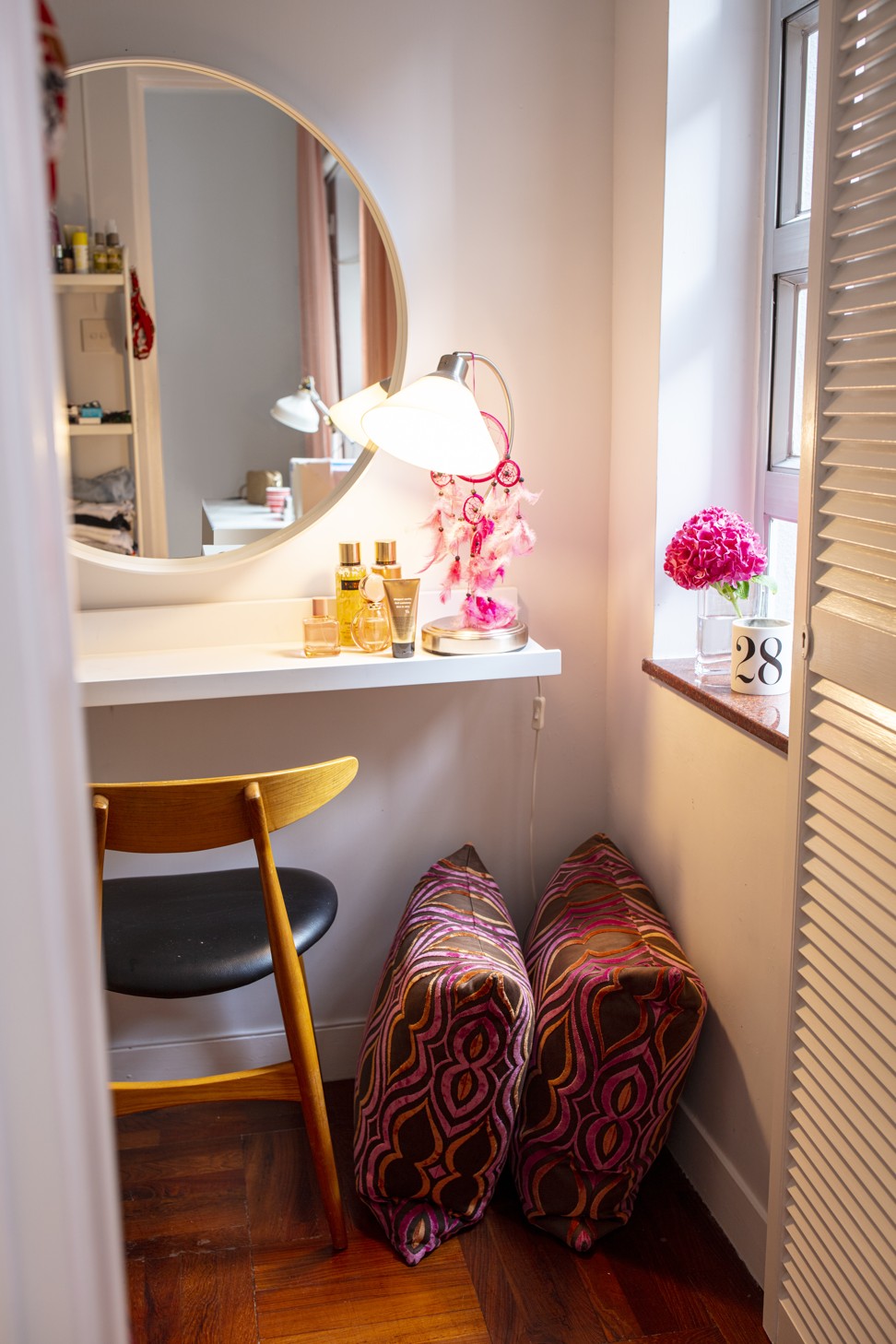
Make-up room Duncan converted a cupboard into a make-up room for her teenage daughter, Mia. The mirror (HK$299) and lamp (HK$229) both came from Ikea as did an old shelf, which has been given a new lease of life as a wall-mounted dressing table. The vintage chair came from Tokyo years ago and the cushions were made out of fabric found in a market.
Tried + tested

Covering ground Unsightly flooring in the kitchen and breakfast nook would have been too costly and difficult to remove. So Aviva Duncan hid it with inexpensive linoleum in a monochrome checkerboard pattern, which was easy to lay over the existing tiles and took a day to complete. It cost HK$16,000 including materials.